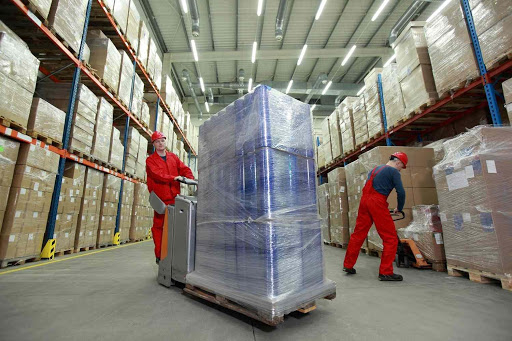What’s the biggest challenge a wholesale eCommerce business faces when first starting out?
Getting customers.
You can’t just create a wholesale store one day and expect customers to come swooping in the next day. That’s not how the internet works.
Sourcing, and selecting the right channels for the right customers can be a challenge. Besides investing your time and resources in marketing activities and paid campaigns, is there any other way you can find customers that are just right?
Yes, there are tactics that you can use to source a list of prospective customers. Be warned though; these aren’t you run-of-the-mill “growth hacks” or “shortcuts”.
They require your time and effort but can prove beneficial for your business.
In this post, we’ll be discussing the five most advanced tactics you can use to find and list down potential prospects for your wholesale eCommerce business.
Tactic#1: Use LinkedIn

If you’ve been searching these strategies for a while now, this tactic might not seem new.
For a while, LinkedIn has been the primary source of B2B customer prospecting and marketing. Seeing as how the wholesale market is professional, you can prospect the right customers from LinkedIn.
From the search box, you can search for B2B business and reach out to them.
Bear in mind that even though the business is highly professional, the people involved in running them are still humans. Your outreach messages shouldn’t be robotic, and you need to convey your message in a friendly yet professional manner.
The best part about LinkedIn is that you can reach out to the right person within a company without any inhibitions or red-tape.
With a little persuasive streak, you can get your wholesale business off the ground – a feat that was pretty much impossible without the internet.
So,
- Visit your LinkedIn profile.
- Make proper adjustments to your profile by making it more professional.
- Type in search queries relevant to your business to find people and businesses in the industry.
- Reach out to them.
- Connect and discuss your business proposition.
How long will it take?
Well, it depends on how you approached your prospect, your strategy, and the kind of marketing materials you’ve designed.
LinkedIn was very much a part of our strategy when we were looking for beta-users for B2BWoo: a WooCommerce B2B & wholesale solution. We reached out and got the right people to give feedback on the product.
Tactic #2: Competitor Analysis

When creating your list of prospects, it’s best to do some competitor research.
Seeing how they approach processes within your industry can provide you with a roadmap, you can follow, albeit with your modifications.
Here’s what you can do:
Create a list of possible competitors in your business. Organize and refine your plan to divide them into direct and indirect competitors.
Scour their websites to look for vendor information. These are usually published in pages like “vendors”, or “retail partners”. Now, add those companies in your list.
Another way you can find out these vendors is by typing in your competitor’s website on Google like this:
“site:competitorswebsite.com”
After that, you can add the term “vendor”, or “retail partners”. The search results will show you a refined version of vendor information without having to scour through their web pages.
It feels shady, but think of it as gaining the upper hand against the competition.
Tactic #3: Find the Complements

You can use the competitor’s list to find out which products would prove to be useful complements to the products they’re selling.
In a physical store, products and their complements align the same aisle. On a digital store, you can create a strategy wherein you develop a list of product complements and then reach out to customers who can purchase those products from your store.
This not only adds more value to your offerings but also allows you to up-end the competition by finding customers who are willing to buy both the products and their complements.
Tactic #4: Prospecting on Geolocation

Quality is better than quantity. In the context of this post, it means that your wholesale store should look for opportunities closer to home. This means focusing on your geographical area.
First of all, create a geographical area from where to select your offerings. When searching for customers, try to find out their location. If they’re within your geographical area, choose them for future outreach.
Why does having a geographical area matter? The ultimate benefit of this practice lies in proximity.
When you’re looking to buy a regular everyday product, would you choose a store that’s closer or far?
The closer your wholesale store is to its customers, the less time it takes for them to visit them if they do wish to purchase in a physical setting. For the business owner, it makes the delivery and logistical processes a lot easier.
Tactic #5: Trade Show Listings

Tradeshows and industry events are an excellent way to gain customers. However, they’re quite expensive to attend. Seeing as how you’re just starting, attending one can hit your wallet hard.
So, what’s your next best option? Their listings!
Yes, this one is as much a hack as any and can provide you serious data to sift through in reaching out to prospective customers.
While you can’t attend these events, the companies listed on the organizer’s website can give you many companies to select, organize and reach out to.
Now, you can email them individually, or reach out to them on LinkedIn through the first tactic discussed in this article.
Since these trade show companies are there for partners themselves, there are chances that they will reply to your outreach.
Conclusion
And that’s it! You’ve just read the five advanced tactics on how to get customers for your wholesale. Reading through this article, we hope you get a better grasp of what it takes to get your store up and running.
If there is one thing, we can tell you; it’s that you shouldn’t apply these strategies all at the same time. Instead, you should A/B test your offerings to find out which process works best for your business operations.
We hope you enjoyed reading.
Read Also
